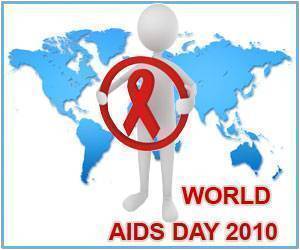Higher concentrations of the AIDS virus in genital secretions are linked to a greater risk of virus transmission between opposite-sex couples.

This is the first study to evaluate directly the relationship between genital concentrations of the HIV-1 virus and heterosexual transmission risk. The researchers demonstrated that high levels of HIV in mucus swabs from a woman's cervix (the opening to the womb) or in a man's semen predicted a high risk of HIV transmission to a partner of the opposite sex.
"The results validate more than 20 years of research and dozens of studies measuring genital levels of HIV as potential measures of HIV infectiousness," said lead author Dr. Jared Baeten, assistant professor of global health and of medicine, Division of Allergy and Infectious Diseases, at the University of Washington in Seattle.
The study results offer greater insight into the biology of HIV infection, Baeten said.
Understanding the relationship between the reproduction of the virus in the genital tract and the risk of its transmission to others, the researchers explained, is central to understanding the biological mechanisms underlying the spread of the virus from one person to another during sexual activity.
The researcher used a standard method of measuring HIV-1 levels in the specimens.
Advertisement
"Future studies will be able to measure genital HIV-1 levels with confidence that such levels indicate transmission risk," he noted.
Advertisement
He explained that future research on reducing an HIV person's infectiousness through HIV treatment, treatment of the patients other sexually transmitted diseases and other genital tract infections, and microbicides inserted in the vagina might be able to use genital HIV levels as a marker of efficacy in blocking virus transmission to another person.
Interventions that greatly reduce genital HIV levels, for example, may be more likely to reduce the likelihood of transmission, than do those that only minimally reduce concentrations.
Genital levels of HIV may potentially be the most relevant marker of HIV exposure for transmission during sexual activity, the researchers noted in their report, and may predict infectivity as well as or better than blood levels of the virus alone.
Baeten studies the biological risk factors for HIV infection as part of his overarching research on the controlling the spread of sexually transmitted diseases through populations. Currently he and his colleagues are studying strategies to ameliorate the HIV epidemic among heterosexuals in Africa. He has several ongoing, collaborative projects exploring the clinical, viral, and immune factors that influence HIV transmission between the two sexes.
For the past 15 years, he has worked with investigators from Seattle and Kenya on long-term studies on how HIV is acquired and its early stages of infection in women.
The study published this week in Science Translational Medicine involved a large international collaborative team working at 14 total sites from 7 African countries: Bostwana, Kenya, Rwanda, South Africa, Tanzania, Uganda and Zambia. The research involved 2521 African couples, making it to date the largest study of genital HIV. At the start of the study, one member of each couple had an HIV infection and his or her partner did not.
The researchers studied cervical samples from 1805 women, including 46 who transmitted HIV to their partner during the course of the study, and semen samples from 716 men, including 32 who eventually transmitted the virus to their partner. Genomic studies of the virus confirmed that it was transmitted between the study partners, and not from an outside relationship.
The higher the level of HIV in genital secretions, the more infectious a person was. The risk rose exponentially on a logarithmic scale.
The researchers found that each 1log10 increase in genital concentration of the virus was associated with a 2.2 fold increase in a woman's risk of transmitting the virus to a man, and with a 1.75 fold increase in a man's risk of transmitting the virus to a woman.
Seven female-to-male and 4 male-to-female HIV-1 transmissions occurred from individuals without detectable genital HIV levels. All had detectable levels of the virus in their blood. The researchers noted that the single assessment of genital secretions may have missed intermittent shedding of the virus from the reproductive tract.
Source-Eurekalert















